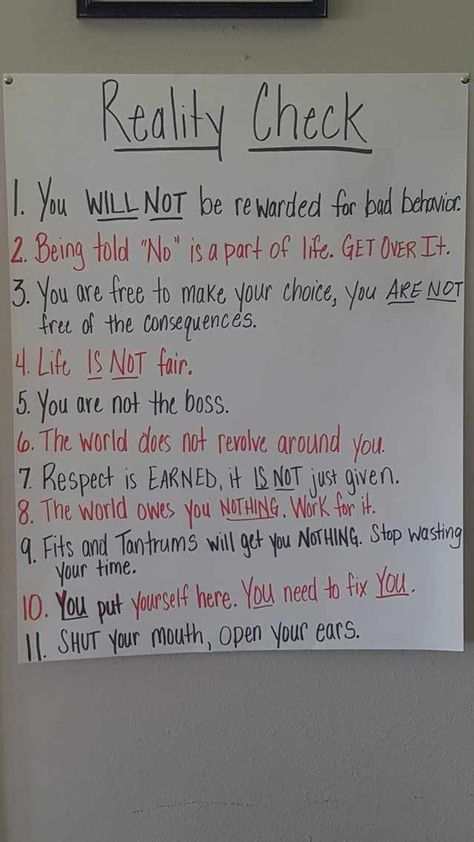
"Nelsan was a gentle, generous and kind .lafayette true blood death. The family of late "True Blood" actor Nelsan Ellis says the actor was attempting to withdraw from alcohol leading up to his death .“Games with balls, chicks and babes, writer rites, good times, fun and games, lots of love to share. Lots of lovers, fish and frogs in the seas, knights and kings, slugs and snakes in the waters. Craig List Jobs (Hiring) - Positions Available : CLOWNS SPOTTED White Knights:

💞Sunny and bright lights, ...out in the dogwood trees, pieces of a dream, pieces of the rainbow.
Retired, house on the block, alone again, to spare, to create a new way of life. Roads to travel, paths to
cross, boys to men, baby boomers, heads above the common: you're as rare as I am and we should
definitely meet.Black and white matters, hearts on the fields, dreams of horses, dates with knights,
cowboy Jim, black rider. Damien Kendall Aerosmith has got the right song for this situation? “Love
in an elevator living it up while I’m going down!”Thanks Again.
To the 35,000 people taking time out of their days to write HBO to tell them to reshoot Game of Thrones u don’t like the arc of the lady riding a dragon, how about you use some of that energy to write officials to tell them to stop forcing women to have a rapists’ baby.

How will vertical specialists succeed in going beyond LinkedIn to create new value? First, LinkedIn does not cover every job category sufficiently. For example, blue collar workers have never been able to use LinkedIn to showcase their work history and to find new opportunities. Second, many job opportunities are in the form of gigs, or shifts, which are very different from the full time employment opportunities found on LinkedIn. Some workers prefer the flexibility of working in gigs and many valuable services can be fulfilled by a gig worker, but LinkedIn is not a good forum for making these matches. Thanks Again.It’s maddening. We are regressing.
Dazes to be thanks to the stars, to the blues lights, thanks so much, lights of luck. Looks of a frog, looks of snakes, locks of hair to blow, winds to trees. Birds and bees, songs in the wings, angels in the air, goodness and mercy to flowers, angels in the air, out to guard. Dazes in the dark, dazes in darkness, dazes to dance, birds out for trees. Cycles, Circles, Seasons Of Joys, Slaves For Life. Fun and Games, Battles And Wars, Dress Blues, Family Parties, Mothers Day, Back In Greens.I wish I lived on a beach 😭😍🌊.Desert Rats:Color Me Badd - I Wanna Sex You Up ... Trees and treats, twists and turns, girls in the woods, lost and sad, family gone, angels in the air, angels in host, follow her. Dark dazes in the rain, dark dazes on the sands of time, life is a beach, every day events, thanks for the time to share. Cycles, Circles, Seasons Of Joys, Slaves For Life. Fun and Games, Battles And Wars, Dress Blues, Family Parties, Mothers Day, Back In Greens.I wish I lived on a beach 😭😍🌊.Desert Rats:Color Me Badd - I Wanna Sex You Up ...

Third, LinkedIn does not have industry-specific functionality that is highly valuable when matching workers with employers. Many industries would benefit from a purpose-built solution that could integrate with existing work flows or help workers satisfy licensing or other regulatory requirements. “these labor marketplaces are often focused on what seems like very narrow verticals. This hyper-vertical focus allows companies to simplify their marketing message, tailor their product and streamline their business development efforts.” Because of this, some of the most interesting opportunities in the next five years will be in vertical service marketplaces. Thanks Again.
This makes sense when one considers that the bulk of the U.S. economy is made up of services. While most of the first-generation marketplaces were product-oriented (eBay, StubHub, etc), we’re already starting to see a second wave of service-oriented marketplaces (Uber, Rover, etc) which is still developing and has significant opportunity for entrepreneurs and investors. This trend has only been accelerated by significant improvements in key underlying technology (Twilio, Checkr, Stripe, etc) that facilitate marketplace growth by making it easier to communicate with constituents on both sides, filter for quality workers, manage payments in both directions, and more.
Vertical marketplaces that involve fractionalized labor (eg, tasks, gigs, freelance work or short-term assignments) are particularly interesting. These fractionalized labor marketplaces have three key advantages over pure job sites that are focused on full-time employment. First, the fractionalized labor marketplaces tend to have high repeat usage on the supply side because the workers come back frequently to find the next money-earning opportunity. Second, the fractionalized marketplaces are often able to extract a significant recurring transaction fee on every task, gig or assignment, thereby collecting an ongoing percentage of a worker’s income which accumulates to be much larger than a one-time fee or a monthly SaaS fee.
Third, by breaking down the labor into a smaller atomic unit, the newer fractionalized-labor marketplaces appeal to a much larger universe of demand-side participants. Case in point: Uber is successful because you hire a driver for a single task. The company would not appeal to nearly as many riders if they had to hire a driver as a full-time employee or even for a full day. When discussing ideas for hyper-vertical service marketplaces with entrepreneurs, we generally advise the following:
The more verticalized, the better. Identify a vertical with frequent repeat usage. Defend against disintermediation. Consider possible data moats. The more verticalized, the better Naval Ravikant recently touted the benefits of verticalization when he Tweeted that “people want oranges and people want lemons, but nobody wants a citrus”. Although Naval’s comment is referring to consumer tech, the same holds true with these vertical labor marketplaces. In fact, these labor marketplaces are often focused on what seems like very narrow verticals. This hyper-vertical focus allows companies to simplify their marketing message, tailor their product and streamline their business development efforts.
For a startup, this focus has huge advantages because it allows the company to drive significant traction in a narrow area instead of trying to “boil the ocean,” which often leads to making very little headway in any given area. Once a startup achieves a dominant position in the hyper-vertical market, it can often extend its business into adjacent markets.
Typically, vertical service marketplaces need to offer specific functionality to benefit both the demand side and the supply side. The demand side needs to be able to obtain a valuable service at a competitive price, often in a short time frame. On the supply side, what attracts workers is the ability to find money-earning opportunities easily, work flexible hours, receive comparatively more pay and benefit from more variety in their careers. Thanks Again.
By building specialized features for the specific job category, the marketplace is able to satisfy these customer needs and deliver a strong value proposition. The stronger the value proposition to each of the participants, the stronger the tailwind for rapid growth of the marketplace. Instawork and Pared are labor marketplaces for food and beverage workers that enable caterers and restaurants to quickly fill available shifts, often within 24 hours. These businesses have experienced significant growth because every aspect of the product and every aspect of the marketing is specifically tailored to the food and beverage vertical and therefore serves the needs of the restaurants, caterers and workers more perfectly.
In hyper vertical marketplaces, if you’re less vertical than someone else, then you lose to the more vertical player because their product-market fit is more perfect than yours. 2. Identify a vertical with high repeat usage, for both demand and supply When a marketplace business has strong repeat usage on both the demand side and the supply side, both sets of market participants have a high lifetime value.
This high lifetime value allows a business to spend more money on customer acquisition in the short term which provides more opportunity for the marketplace to scale. In the long term, the high lifetime value leads to a more profitable business.
“While many marketplaces have high repeat usage on the supply side, far fewer have high repeat usage on the demand side.” As discussed earlier, high repeat usage on the supply side often happens when the marketplace is focused on short-duration assignments (gigs or shifts vs. full-time jobs). In many cases, the workers on the supply side rely on the marketplace for their livelihood and find multiple gigs per year, week or even day through the platform. For example, Rover, a marketplace for dog walkers, has strong repeat usage on the supply side in that many dog walkers use the app to find multiple dog-walking gigs per week. While many marketplaces have high repeat usage on the supply side, fewer have high repeat usage on the demand side. Thanks Again.
Some vertical marketplaces offer a valuable service but are focused on a vertical that has lower repeat usage for the demand side (eg, residential moving, plumbers, etc). In contrast, when the demand has a frequent need for the service that the marketplace offers, each demand side customer is more valuable and the marketplace can afford to spend more money to acquire each one. Dray Alliance, a marketplace for drayage truckers who transport containers from the ocean ports to warehouses, is an example of a marketplace with strong repeat usage on the demand side with some customers who use the service to transport more than 100 containers per month. The most valuable vertical labor marketplaces have high repeat usage for both the demand and the supply side.
3. Develop a strategy to defend against disintermediation One common problem with many labor marketplaces is disintermediation. This occurs when the supply side and the demand side choose to “cut out the middleman” and transact directly with one another. Disintermediation can be particularly acute when there is high loyalty or a high degree of trust between the demand side and the supply side. For example, consumers who use StyleSeat, a marketplace for hair stylists, build high loyalty and trust with an individual hair stylist. This creates a disintermediation risk since the consumer and the hairstylist might choose to transact directly after the initial match is made.
“Disintermediation can be particularly acute when there is high loyalty or a high degree of trust between the demand side and the supply side.” There are several strategies to defend against disintermediation: focus on a vertical with homogeneous supply provide value-add tools or services for one or both sides explore other pricing models Marketplaces where the service is delivered by a homogenous supply tend to have a low risk of disintermediation. Because the supply side is homogeneous, there are many different workers on the supply side who can deliver the service satisfactorily and there is no trust or loyalty that builds up with a specific supply-side worker. This allows the marketplace to hold the trust instead of the individual supply-side worker holding the trust.
Said differently, demand side participants trust the marketplace to find a satisfactory match with a supply side worker each time the demand side needs the service. Uber is a great example of this since riders are willing to ride with a different driver each time; the rider’s trust lies with the marketplace, not with a specific driver. “This allows the marketplace to hold the trust instead of the individual supply-side worker holding the trust.” The second strategy involves creating value-add tools or services for one or both sides of the marketplace. SaaS features such as scheduling, payment collection, and workflow coordination can help keep the supply side on the marketplace even when there are other disintermediation forces.
Sawyer, a marketplace for kids activity providers, has done this by providing scheduling, marketing and booking tools for these small businesses. The third strategy involves capturing the economics through alternate pricing models. One alternate pricing model is to charge a one-time larger fee on the first transaction when the match is made. By doing this, the marketplace accepts the fact that supply and demand will transact directly after the initial match is made and has priced its matchmaking service accordingly. A second alternate pricing model is to charge a SaaS fee instead of a transaction fee.
This latter strategy changes the business model from a marketplace to a SaaS model, which can be an effective way to defend against disintermediation. This is exactly what StyleSeat chose to do; by focusing on the SaaS model, they have neutralized the disintermediation risk. 4. Consider building a data moat Many vertical labor marketplaces have a data moat that creates defensibility for the marketplace. This data moat often comes in the form of reviews or feedback about the workers on the supply-side of the marketplace.
These reviews provide a way for the workers to display their track records and develop a reputation, both of which facilitate future job opportunities. Workers who have performed well in their previous assignments get positive feedback from the demand side. This feedback can be in the form of quantitative ratings (i.e. 4 out of 5 stars) as well as qualitative reviews like a description of a worker’s personality or work ethic. As a worker receives more feedback from more demand-side participants, the worker is able to get future jobs more easily, which creates stickiness for the worker.Thanks Again.
The worker has more success getting jobs from a marketplace where he has multiple strong reviews than from a marketplace where he has no reputational data. The reviews are also valuable for the demand side because they help create trust and provide peace of mind that the worker will do a good job. This creates a virtuous cycle that creates a moat for the marketplace and strengthens the business as it grows. Instawork and Pared have both done a great job of leveraging reviews to build a data moat.
“As a worker receives more feedback from more demand-side participants, the worker is able to get future jobs more easily, which creates stickiness for the worker.” Another type of data moat is when the supply side or the demand side uses the product as a repository of data that facilitates the hiring process. For example, Trusted has a strong data moat because it allows nurses to store all of their required credentials, licenses and references in the Trusted system.
Many of these items are required by law for a nurse to work at a hospital. Before Trusted, the process of collecting and sharing these items resulted in significant friction each time a nurse had to onboard to a new hospital. Because the Trusted platform is a central repository for this data, the nurses can easily share these required documents as well as their work history with the hospital. This creates a dynamic where the nurse would prefer to find job opportunities via Trusted rather than use a legacy staffing agency because all of her on-boarding data is already stored in the Trusted system.

If you’re an entrepreneur working on any type of marketplace, I’d love to hear from you. The thoughts in this blog post are just meant to be guideposts. The best startup teams solve problems in new and innovative ways that will most certainly differ from some of my thoughts in this post. If you have feedback on this blog post in general, please send me your thoughts. You can reach me at: jfluhr@craftventures.com. Jeff Fluhr is a General Partner at Craft Ventures where he runs its marketplace practice.
Previously, he was Founder/CEO of StubHub which he ran for seven years until its acquisition by EBay. Craft Ventures is an investor in Trusted and Dray Alliance, and Craft partners were angel investors in Uber and Twilio. StartupMarketplacesService MarketplaceFuture Of WorkEntrepreneurship Go to the profile of Jeff Fluhr Jeff Fluhr Medium member since Apr 2019 Now: General Partner of Craft Ventures. Former: Co-Founder/CEO of StubHub. Angel investor in Twilio, Houzz, Warby Parker, Trulia and others.
Craft Ventures Craft Ventures Craft Ventures is an early-stage fund dedicated to the craft of building great companies. Responses Craft Ventures Craft Ventures is an early-stage fund dedicated to the craft of building great companies. Get one more story in your member preview when you sign up. It’s free.
No comments:
Post a Comment